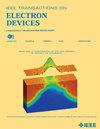Improved Longevity and Reliability for Hundreds of Amps, Repetition Frequency Avalanche GaAs PCSS by High Thermal Conductivity Graphene Heat Sink
IF 2.9
2区 工程技术
Q2 ENGINEERING, ELECTRICAL & ELECTRONIC
引用次数: 0
Abstract
The avalanche multiplication effect of carriers in gallium arsenide photoconductive semiconductor switch (GaAs PCSS) can generate a robust current, thereby amplifying the impact ionization and recombination of carriers while yielding a filament current with high density. The movement of carriers and phonons intensifies the thermal effect within the device, thus establishing a pernicious cycle that leads to substantial heat accumulation and eventual breakdown of the switch. This is precisely the predicament that PCSS urgently needs to address. Herein, a novel longevity-enhancing technique for GaAs PCSS is proposed, which is based on the laminates of graphene heat sinks (GHSs) and aluminum nitride ceramic substrates (AlN-CSs). The GHS has dual functions of improved heat dissipation and dielectric packaging for the device. The experimental results show that the GHS has excellent photoelectrothermal stability, with the dielectric constant and thermal conductivity reaching 13.3 and 500 W/(m求助全文
约1分钟内获得全文
求助全文
来源期刊

IEEE Transactions on Electron Devices
工程技术-工程:电子与电气
CiteScore
5.80
自引率
16.10%
发文量
937
审稿时长
3.8 months
期刊介绍:
IEEE Transactions on Electron Devices publishes original and significant contributions relating to the theory, modeling, design, performance and reliability of electron and ion integrated circuit devices and interconnects, involving insulators, metals, organic materials, micro-plasmas, semiconductors, quantum-effect structures, vacuum devices, and emerging materials with applications in bioelectronics, biomedical electronics, computation, communications, displays, microelectromechanics, imaging, micro-actuators, nanoelectronics, optoelectronics, photovoltaics, power ICs and micro-sensors. Tutorial and review papers on these subjects are also published and occasional special issues appear to present a collection of papers which treat particular areas in more depth and breadth.
 求助内容:
求助内容: 应助结果提醒方式:
应助结果提醒方式:


